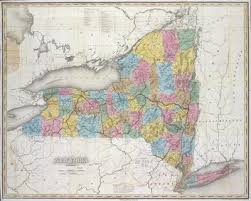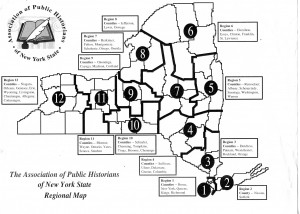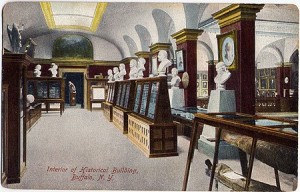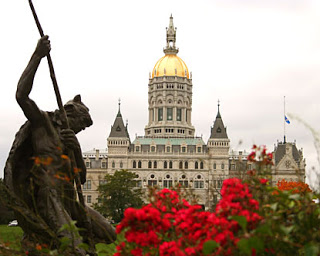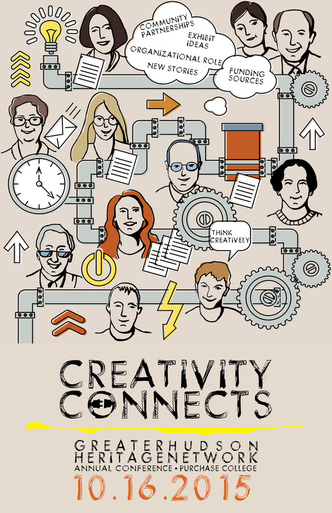
In recent weeks I have had the opportunity to attend and participate in three regional and county history community meetings:
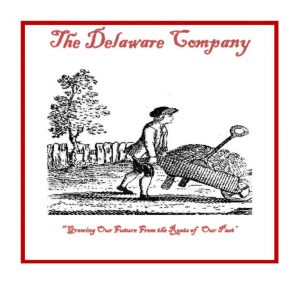
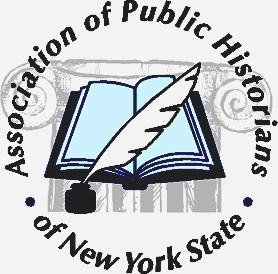
October 16: Greater Hudson Heritage Network (GHHN) annual meeting
October 24: APHNYS Region 3 also covering mainly the Hudson Valley
November 14: Sullivan County History Conference
These three meetings provided venues to meet with colleagues, discuss issues and topics, and learn what is going on. What follows then are some highlights from those meetings and this post is not intended to be a full report on what transpired.
Greater Hudson Heritage Network
This organization conducts an annual meeting in the Hudson Valley region and draws from people outside the region as well. It is a day-long conference with plenary speaker(s), concurrent sessions and includes lunch. These past two years it has been held at colleges so presumably there is no rent or it is nominal. This year Prof. Lisa Keller of Purchase College was the host. There is a fee to attend.
At the conference, Priscilla Brendler, Executive Director, spoke, among other things, on the Path through History. There were flyers for the June 18-19, 2016 dates and she urged people to participate in this program which helps provide vital statistical information on the state of history tourism in the state.
At the Women’s Suffrage Centennial Conference, Gavin Landry, Executive Director, I Love NY, mentioned that based on my posts on the Path through History, some changes had been made. He didn’t identify them but I suggest two such changes were on view here. One is based on my criticism of the “Simon says” aspect of the date selection leaving history sites and others scrambling to guess when the Path Weekend will occur. The second was organizations not having sufficient lead time to plan or having their June event on the correct date. The decision now is for Fathers Day weekend with plentiful advance notice.
Another change which I did know about was the relationship of GHHN to the Path through History weekend. The flyer distributed at the meeting lists a GHHN phone number and email address for contact, questions, and updates. It would seem that the work for operating the Path Weekend has been outsourced to GHHN presumably for which GHHN gets paid. GHHN already operates some programs on a statewide basis and this appears to be another example of its expansion beyond the Hudson Valley. The history community would benefit from having a NYHN, a New York History Network although it should be noted that GHHN tends to focus on the backend of history site operations and less on history itself or outreach. Teaching the Hudson Valley (THV) used to do that before it shifted its focus to the environment. So while there is (or used to be before the 2016 cancellation) a state history conference (NYSHA), regional and/or county ones are hard to find.
The keynote speaker at the conference was Professor Ken Jackson, Mr. New York State History. He was the keynote speaker at the launching of the Path though History in 2012. He had been personally recruited by Governor Cuomo to participate in the now defunct Path through History Taskforce which never really did much and was more for show. His talk addressed the same considerations as his keynote address three years earlier now with some perspective on the Path project he helped launch. Jackson referred to the project as one of “noise” and “not much else.” It was not well run or thought through. Cuomo takes credit for it but doesn’t do much for it. The financial support is down. Nothing Jackson said was new to regular readers of my posts
The contrast between the talks of Priscilla and Ken could not have been greater. Here in the briefest of time spans, one was able to experience the official view from the Albany-Manhattan bubble and the reality outside the bubble. Admittedly, I enjoy moments like this because they make writing posts so easy.
APHNYS Region 3
This was an excellent meeting organized by Suzanne Isaksen, regional coordinator Town of Montgomery historian and hosted by Mary Ellen Matise, Village of Walden Historian. The meeting was held in the historic village hall and public library and we were welcomed by the mayor. This was a day-long program with lunch on our own by walking to nearby places in the historic setting. There was a slight fee.
Three speakers from the New York State Office of Parks, Recreation and Historic Preservation (NYSOPRHP) presented – Dan McEneny, Jennifer Betsworth, and Matthew Shephard. The program provided an overview of the Division for Historic Preservation and its programs, the process and criteria for National and State Register listings including tax advantages, and the new Cultural Resource Information Database (CRIS). We had the opportunity through CRIS to see maps identifying the cultural resources right in Walden where we were meeting. The database is a remarkable tool and if the history signs or markers could be added, it would be a terrific resource for the history community. You can not only see a site but access detailed information on it. This new website requires some thoughtful thinking and conversations with the history community on how it can best de used and developed. It can be located at https://cris.parks.ny.gov.
This session, which could be repeated throughout the state and at statewide conferences, made me realize a missing ingredient in the public historian training. As the New Historian session at the APHNYS state conference made clear, people become public historians in their communities often with little training or guidance. While there is some information at the APHNYS website (guidelines which need to be updated), municipal historians don’t necessarily know that APHNYS even exists. The challenges of being a municipal historian were the recent subject of Orange County Historian Johanna Yaun’s newsletter and post to New York History Blog
Recommendation – all public historians should receive and be required to receive state-funded training in Albany. Such training should include the NYS Archives, NYS Library, NYS Museum, NYSOPRHP and the NYS Historian. The program should include touring the facilities, meeting the staff, learning the resources available and the related rules, regulations, and requirements. This one-week training program will improve the professionalization of the municipal historian across the state, enhance the status of the position to the local mayors, town supervisors, and country executives, and help counter the isolation of the municipal historian. To establish the program actually is the simple part as each of the state entities in Albany could easily formulate such a program if asked. The challenge would be in funding. That would require a concerted effort by the history community to advocate for it, an activity which is conspicuously absent at present. At some point it would be beneficial to develop an agenda of what the history community wants from the state and then advocate for it.
Sullivan County History Conference
This was an excellent meeting organized by John Conway, Sullivan County historian. It was held at the Sullivan County Community College with the real credit belonging to Debra Conway as her husband repeatedly mentioned. Congratulations on a job well done. The program was funded by the Delaware Council and was free including lunch.
The stated intention is for this to be an annual event and it is an example of what every county should do. The attendance was over 70 people for this day-long event despite the snow flurries in the county and the near freezing weather. As I said in my keynote, when I left home in Westchester it was fall. When I arrived in Sullivan County it was winter.
This particular conference focused not on the history of Sullivan County but on the state of history. It included a video welcome from Congressional Representative Chris Gibson with whom I also shared the program when the Delaware Council was launched. Other speakers included fulltime county historians Johanna Yaun and Will Tatum III from Orange and Dutchess Counties. County history conferences were held there in 2011 before their time and I hope they will have one-day programs of their own soon. Johanna held a mini-conference in the summer which John and I attended and which partially served as a catalyst for this one.
The conference drew from a multitude of areas. Linda Oehler-Marx, a former teacher, spoke on the issue of finding a place for local history in the new social studies framework. This is a vital issue and there needs to be more discussion between the history community and the teachers on how to incorporate local and state history into the classroom even without field trips.
Social media was addressed in general terms by Johanna in her presentation and by Matt Colon, Director of the Historical Society of Newburgh Bay and the Highlands. I commented on when I first got involved in local history, the State Archive Records Administration (SARA) grants were to microfilm records. Times and technology have changed. Here is an area where county-level workshops on how to take advantage of new technologies really would be useful.
The conference ended with a presentation by Kristina Heister, the Superintendent of the Upper Delaware Scenic and Recreational River, NPS. Much of her talk was on the NPS which will be celebrating its centennial next year. She also mentioned Imperiled Promise: The State of History in the National Park Service, a study commissioned by the NPS. Marla Miller, one of the co-authors, spoke at a pre-conference workshop to the NYSHA conference at Marist in 2014. I spoke with her afterwards and then downloaded the 120-page report. I have read it but not yet written about it. Some of the recommendations are appropriate not only for the NPS sites in New York but for NYSOPHP as well. According to Kristina in terms of implementation the study is still a work-in-progress. I guess I have put off writing about it for long enough.
Of course, no history conference would be complete with noting the comments made about the Path through History. Although there were some perfunctory remarks made about its continued existence, the comments to the audience that it was an “ill-fated debacle” with no history community participation that fizzled out got right to heart of problem. One suggestion was a massive statewide letter-writing campaign addressed to the governor so perhaps he wouldn’t remain clueless.
History conferences are a lot of fun and I recommend more of them at the county and regional level. It also would be nice to have a master calendar for such county, regional, and state conferences. Maybe the new state historian once one is hired could take the lead here.


